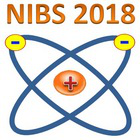Speaker
Mr
Yuji Shimabukuro
(Doshisha University)
Description
The principle mechanism of the negative hydrogen (H$^-$) ion current enhancement due to Cs injection can be attributable to the reflection of atomic hydrogen at low work function plasma grid surface. To directly confirm the contribution of atomic hydrogen (H$^0$) flux in the actual ion source operating condition, H$^0$ sources of different types are attached to a small multicusp type H$^-$ ion source. Our previous work using a microwave driven atomic source revealed that low energy H$^0$ injection into a cesiated hydrogen plasma resulted in reduction in H$^-$ ion current despite the original expectation. The possible reason can be the inadequate formation of surface produced H$^-$ by H$^0$ injection that did not surpass the destruction of H$^-$ due to injected H$^0$. In this report, high temperature hydrogen atoms formed in a thermal cracking cell strike the plasma grid surface of the H$^-$ ion source. The velocity distribution from this type of atom source can be broader than the microwave atom source, and H$^-$ can be surface produced with higher efficiency due to the high velocity component in the velocity distribution. The H$^-$ current and the co-extracted electron current are compared for the conditions with and without Cs supply. Unlike the hydrogen atoms produced in the microwave discharge, it was observed that thermal hydrogen atoms destroyed the volume produced H$^-$ ions in the certain condition without Cs. We will report the effect of H$^0$ injection by thermal cracker cell to compare with the effect due to low energy H$^0$ injection from a microwave discharge cell. The effects will be investigated under both condition with and without Cs coverage.
Primary authors
Prof.
Motoi Wada
(Doshisha University)
Mr
Tatsuya Kuzumi
(Doshisha University)
Mr
Yuji Shimabukuro
(Doshisha University)

